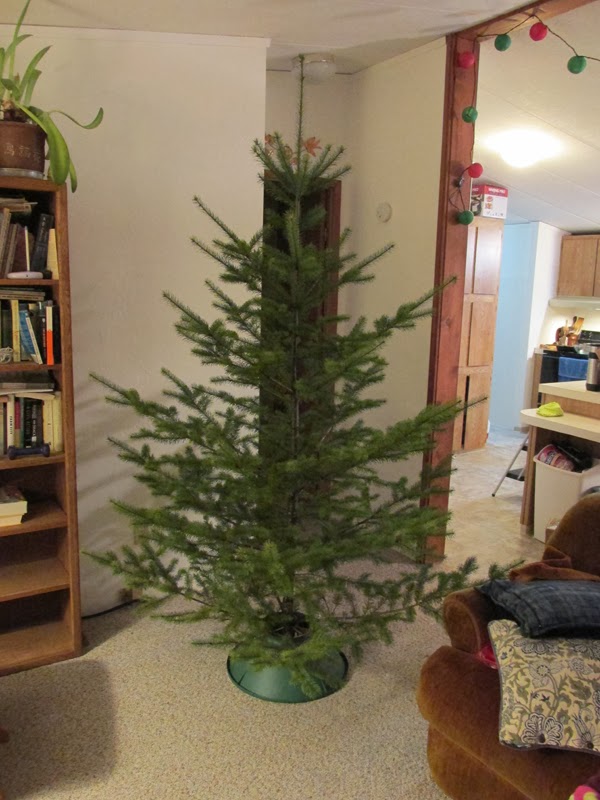This weekend we got our Christmas tree. I understand that
Christmas trees were originally pagan traditions in Germanic areas of Europe.
They were related to tree worship practices and were one of the pagan
traditions from many countries that were adopted by the early Christian Church as it
was expanding. Nowadays it seems that Christmas trees are also secular
decorations for the season.
It all works for me, pagan, Christian, secular. I like
Christmas trees. Maybe someday, I might delve a little deeper into the origins of the modern Christmas tree but, right now, this is the first year that Vashti is really aware of
what is going on and has been quite excited.
We went to a favorite spot of mine under some power lines.
The trees here will have to be cut anyway so taking one for a Christmas tree
will save somebody some work some day. Because it is a power line right of way
it is also quite open which allows many trees to grow fairly even whorls of
limbs all the way around.
Sacha and I were talking about what species make the best
trees and it seems that, as a general rule, shade intolerant species make the
best trees. I don’t know if this is a function of the shade intolerant trees
naturally growing in open areas, which allows the foliage to grow more evenly
or some other factor. We did notice that western hemlock (Tsuga hereophylla) growing in the open areas had uneven foliage. In
the past, I have used lodgepole pine (Pinus
contorta var. latifolia), western
white pine (Pinus monticola), Douglas-fir (Pseudotsuga menziesii) and Pacific silver
fir (Abies amabilis) for Christmas
trees. Of all the previously named trees, only Pacific silver fir is shade
tolerant. Other true firs are also popular Christmas trees.
Sacha picked the tree this year and she did an excellent
job, better than I did last year I must say. This year’s tree was just about
the right height and had good even foliage all the way around. Of course, it is
much more sparse than one you would get off a tree lot that has been formed and
pruned. I like the look of a natural tree better than one off a tree lot,
though I don’t have a problem with folks who get their trees from lots. To be
sure, I like to get a tree that is as even as possible but I don’t like one
that is over groomed.
The decorating took place over two evenings. It is an
amateur job to be sure and, though I’m pretty sure Martha Stewart is going to
be giving us a call any time soon to get decorating tips, it is our tree.
We usually take the tree down the week after Christmas and
compost it in the woods. We don’t add anything like tinsel or that foam stuff
so the tree will break down quite nicely and may even provide some habitat for
birds or other critters for a few years.
 |
| The tree is chosen. |
 |
| I am a little non-traditional when it comes to cutting the tree. I find that a machete works better than an axe for smaller trees. |
 |
| Every year it always takes a little figuring to determine the best place to put the tree. This year we decided on this spot. |
 |
| Ready for the tree. |
 |
| Ready to start decorating. Unfortunately the ruddy nose and cheeks aren't the result of crisp, fresh air. They are the result of a nasty cold that several of us ended up sharing and it tur |
 |
| This year we got the cart a little ahead of the horse and started hanging ornaments before stringing the lights. The lights had to be retrieved from a different storage box than the ornaments. |
 |
| Decorating in progress. |
 |
| Un-decorating in progress. I think the process of decorating and un-decorating will go on this year as long as the tree is up. All of the fragile and potentially dangerous ornaments were hung out of reach. Some will note that the tree is a little crooked. It took a bit of adjusting to finally get it straight and secure in the base. I do like the base which can be filled with water so the tree will last a little longer before drying out and becoming an extreme fire hazard. |












No comments:
Post a Comment